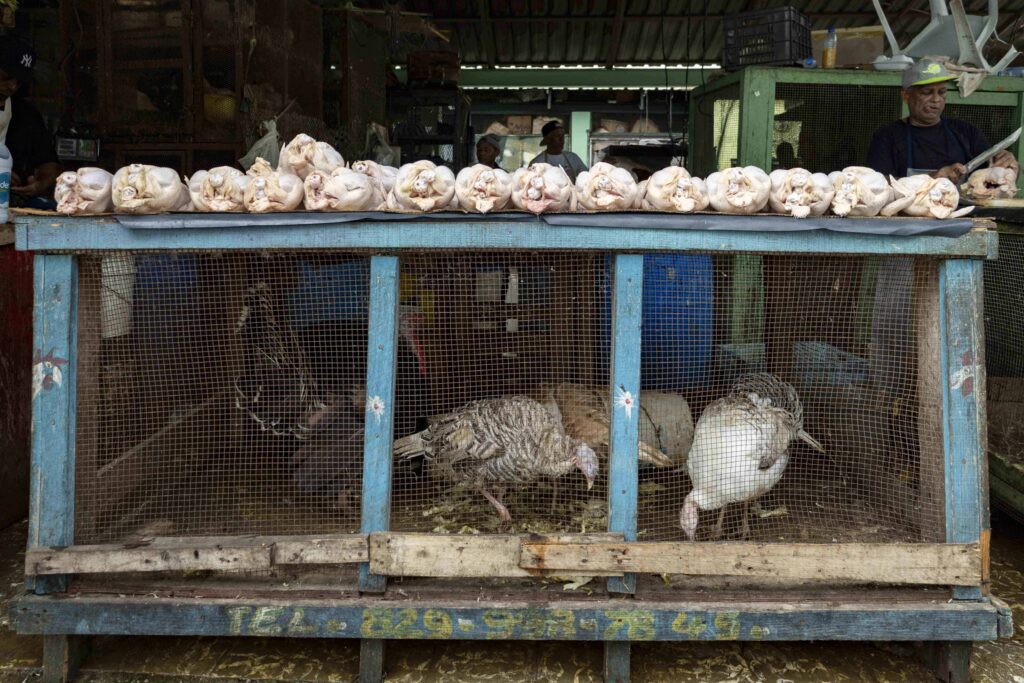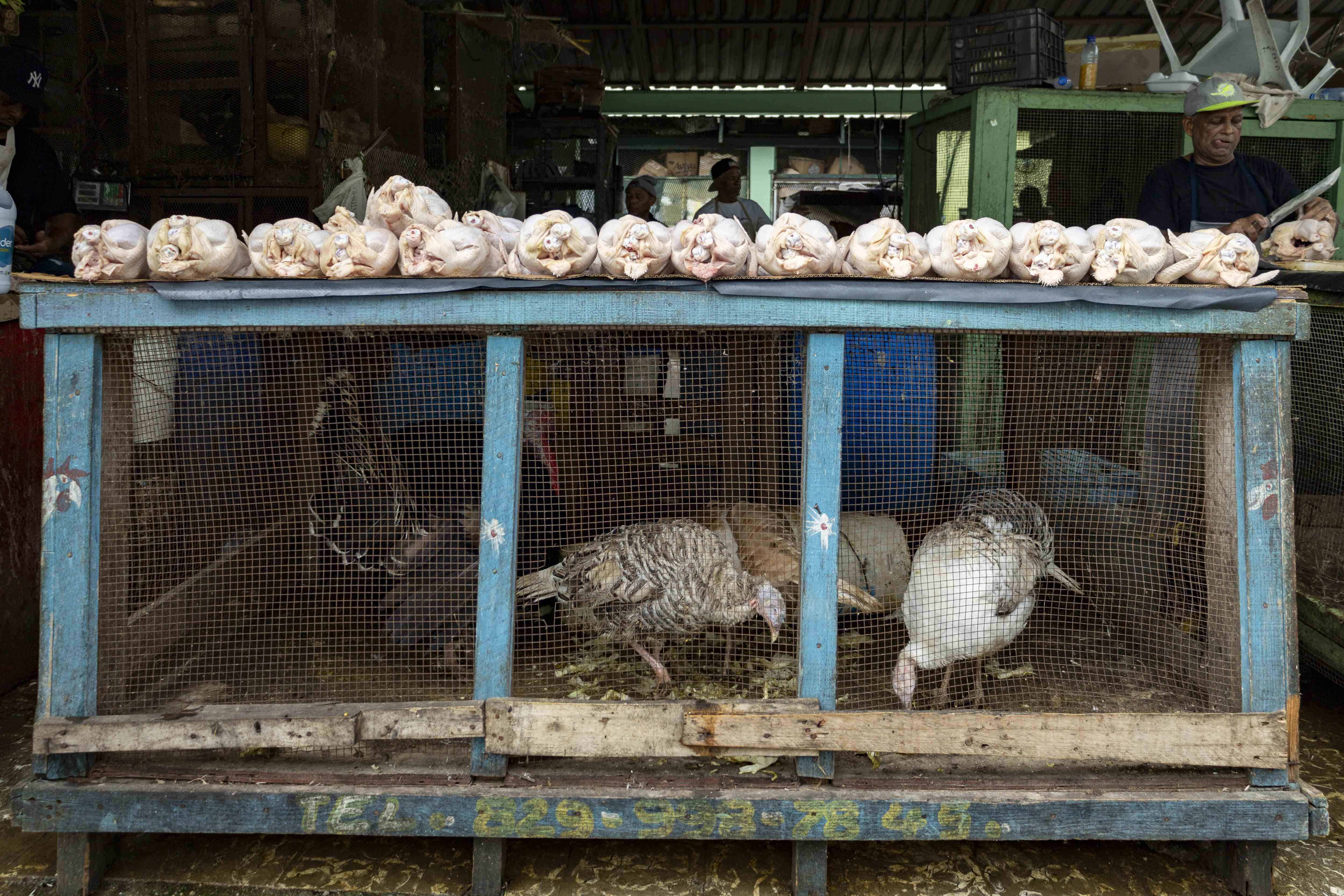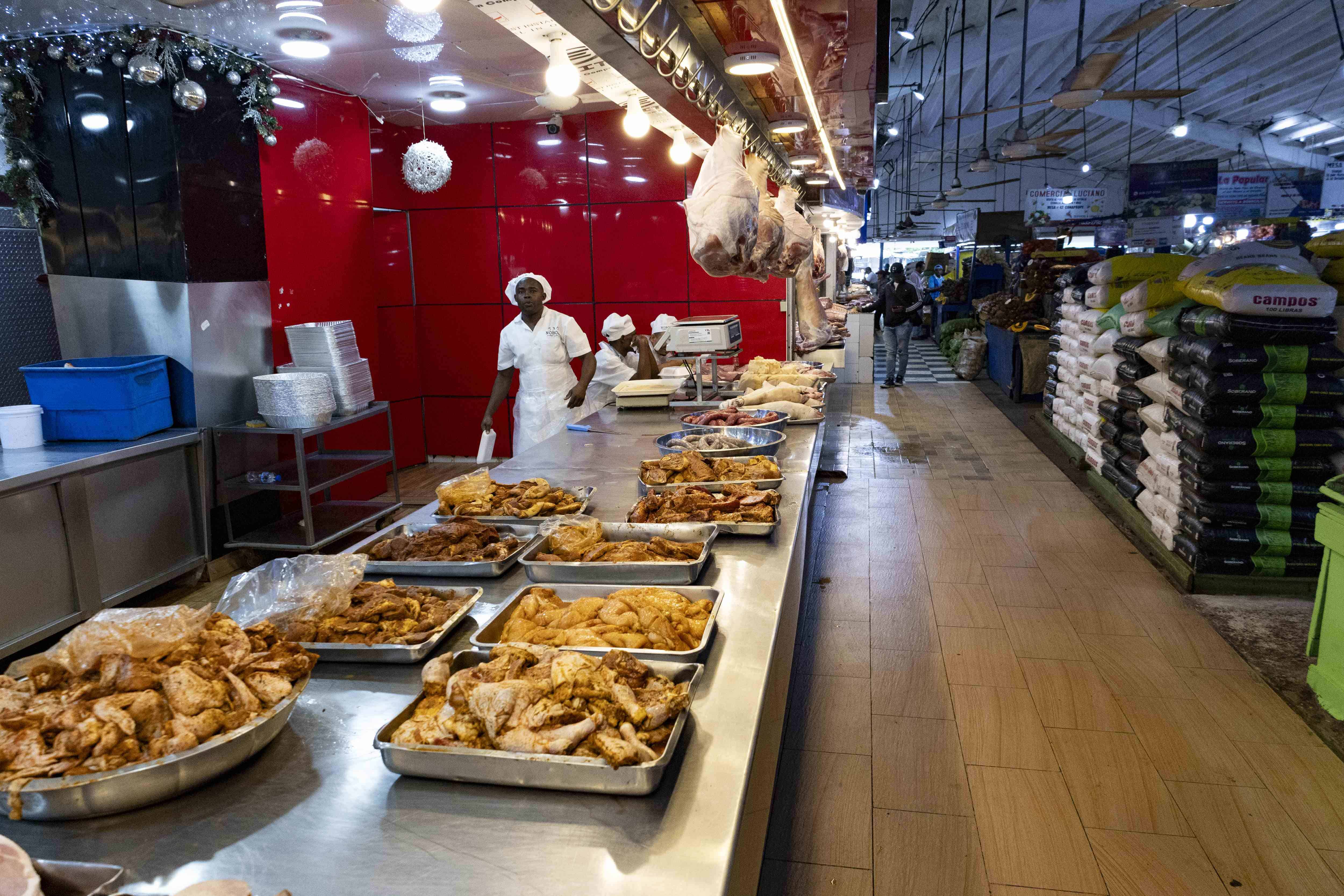
This Monday, the pound fresh chicken was around 65 pesos and 75 pesos in some sales stands of the main markets of Greater Santo Domingo, even with establishments that offered it at 60 pesosup to 25 pesos less than what it was sold four months ago, when high temperatures caused a seasonal shortage that placed the pound between 75 and 85 pesos.
“Here it was at 80 pesos, but now it is at 65 pesos. They have already raised it somewhat, but that did not stop anything because there is overproduction and we have been buying at a price acceptable; Now, if it comes back and goes up again, we will have to put it at 70 or 75 pesos,” explained a seller of chicken who only introduced himself as Francis, in an establishment in the Mercado Modelo.
Alexis Suero agrees with this, who confirms that there is currently a greater volume of the product.
“The polleritos – small distributors – tell (the producers) ‘we are going to produce more’, thinking that they are going to earn more when there is a shortage of chicken; They are drowned there,” said the businessmanone of the few establishments within the Livestock Fair that offers the product at 65 pesos.
Harry Berigüete, another seller located in the Mercado Modelo, explained that he keeps the pound at 70 pesos –five pesos more expensive than Francis–, because he supplies himself with trucks that distribute the productan intermediary between the meat it sells and the farm.

“We buy by scheme; as they sell to them, we buy, and as we buy, then we sell,” he pointed out, adding that he takes into account selling to a price that generates profits and maintains the stability of the offer among the others merchants of this market.
Similar prices are found in the market of Villas Agrícolas, where the pound of product ranged between 60 pesos and 75 pesos, as he was able to verify Free Diary during a tour.

José Ventura, who has a position in this marketsaid he has the chicken at 60 pesos because they are supplied directly from the farm, which has been selling them at 36 pesos per pound.
However, for Juan Pinales the reason for keeping prices low prices of the chicken is due to a reduction in demand, since many of its buyers were haitians with sales of fries.
He indicated that many of them have not returned after the immigration detentionssomething that has affected “the entire market“in a general sense, due to the number of foreigners who go to get their supplies there.
Others markets and supermarkets they keep their price
However, there are other establishments in the markets –like the one in the Livestock Fair– in which this product It was sold between 85 and 95 pesos.

This is the case of the Noboa butcher shopwhere one of its employees explained that this business is offered by the pound chicken at 95 pesos because they buy each unit already cleaned, boned and gutted.
In the supermarketshe chicken fresh whole – not frozen – ranges between 74 pesos and 82 pesos per pound, depending on the brand. Meanwhile, the “pick and shovel” averaged 65 pesos, as confirmed Free Diary on a visit to the establishments.
Overproduction
Last Friday, the Association of Small Poultry Producers of Moca and Licey assured that the Dominican Republic currently has a surplus in production that is exceeding 8 million units per month, and that has farm prices at up to 22 pesos. the pound. The members of this union attributed this overproduction to a lack of planning on the part of the authorities that could ultimately affect the producers.
The overproduction scenario also occurs with one month left before the Christmas festivities, a season in which the poultry sector tends to increase production to meet high demand. The Minister of Agriculture, Limber Cruz, stated in LA Semanal with the press that the country will have 25 million units available, 51.5% more than the average 16.5 million units produced monthly.
Last Friday, the Association of Small Poultry Producers of Moca and Licey assured that the Dominican Republic currently has a surplus in production that is exceeding 8 million units per month, and that has farm prices at up to 22 pesos. the pound. The members of this union attributed this overproduction to a lack of planning on the part of the authorities that could ultimately affect the producers.
The overproduction scenario also occurs with one month left before the Christmas festivities, a season in which the poultry sector tends to increase production to meet high demand. The Minister of Agriculture, Limber Cruz, stated in LA Semanal with the press that the country will have 25 million units available, 51.5% more than the average 16.5 million units produced monthly.



